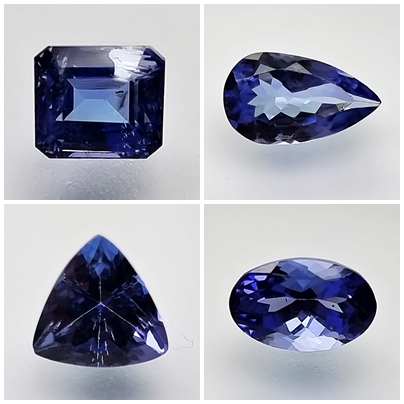Tanzanite: Gemstones Information
Tanzanite, a rare and mesmerizing gemstone, has captured the hearts of gem enthusiasts worldwide with its stunning blue-violet hues and captivating brilliance. Beyond its exceptional beauty, tanzanite holds geological, historical, and metaphysical significance, offering a range of benefits to those who appreciate its allure.
Geological Origin:
Tanzanite is a variety of the mineral zoisite, belonging to the epidote mineral group. It was first discovered in 1967 in the Merelani Hills of northern Tanzania, near Mount Kilimanjaro. Tanzanite owes its unique blue-violet color to the presence of vanadium and chromium ions within its crystal structure. This rare geological occurrence has made tanzanite one of the most sought-after gemstones in the world.
Historical Significance:
Tanzanite’s discovery in 1967 sparked a sensation in the world of gemology. Tiffany & Co., the renowned jewelry company, played a significant role in promoting tanzanite as a precious gemstone, introducing it to the international market with great fanfare. Since then, tanzanite has become highly coveted by collectors and jewelry enthusiasts, earning the title of “gemstone of the 20th century.”
Physical Properties:
Tanzanite is prized for its exceptional color, which ranges from pale lilac to deep indigo, with hues of blue-violet being the most prized. This gemstone exhibits pleochroism, meaning it displays different colors when viewed from different angles. Tanzanite is relatively soft, with a hardness of around 6.5 to 7 on the Mohs scale, making it suitable for use in various types of jewelry.
Metaphysical and Healing Properties:
In metaphysical and holistic practices, tanzanite is believed to possess several beneficial properties for the mind, body, and spirit. It is often associated with enhancing intuition, promoting spiritual growth, and facilitating communication with higher realms. Tanzanite is also thought to promote a sense of calmness and tranquility, helping to alleviate stress, anxiety, and negative emotions. Some practitioners believe that tanzanite can aid in meditation and mindfulness practices, allowing individuals to connect with their inner selves and tap into their intuition.
Emotional Healing:
Tanzanite is often used in crystal healing therapies to balance the emotions and promote emotional healing. It is believed to have a soothing effect on the mind and can help individuals release emotional blockages and past traumas. Tanzanite’s calming energy is said to encourage self-expression and authenticity, allowing individuals to communicate their thoughts and feelings more freely. This gemstone is also thought to stimulate creativity and inspiration, making it a valuable tool for artists, writers, and other creative individuals.
Physical Healing:
In addition to its emotional benefits, tanzanite is believed to have physical healing properties as well. It is said to support overall health and well-being by promoting vitality and energy flow throughout the body. Tanzanite is often used to alleviate physical ailments such as headaches, migraines, and tension in the neck and shoulders. Some practitioners also believe that tanzanite can support the immune system and aid in detoxification processes, helping the body eliminate toxins and impurities.
Chakra Alignment:
Tanzanite is associated with the throat chakra, which governs communication, self-expression, and truth. By aligning the throat chakra, tanzanite can help individuals express themselves more clearly and authentically. It is also said to enhance psychic abilities and intuition, allowing individuals to connect with their inner wisdom and higher guidance. Tanzanite’s soothing energy can help individuals overcome communication barriers and express their thoughts and feelings with confidence and clarity.
Conclusion:
Tanzanite’s exquisite beauty and metaphysical properties make it a cherished gemstone in the world of holistic healing and spiritual growth. Whether admired for its stunning color or valued for its emotional and physical healing properties, tanzanite continues to captivate the hearts and minds of individuals seeking balance, harmony, and well-being in their lives. As a rare and precious gemstone, tanzanite serves as a reminder of the beauty and magic that exists in the natural world, offering a source of inspiration and empowerment for all who encounter its radiant energy.





